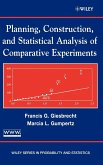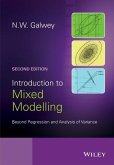The first volume of this book, Introduction to Experimental Design, explained the philosophical foundations of this key area of statistics, going back to the groundbreaking work of the field's founders, R. A. Fisher and Frank Yates. Now this second volume, Design and Analysis of Experiments, builds upon these foundations and provides more detail on certain aspects of error control, treatment designs, and the connections between them.
A comprehensive overview of experimental design at the advanced level
The development and introduction of new experimental designs in the last fifty years has been quite staggering and was brought about largely by an ever-widening field of applications. Design and Analysis of Experiments, Volume 2: Advanced Experimental Design is the second of a two-volume body of work that builds upon the philosophical foundations of experimental design set forth half a century ago by Oscar Kempthorne, and features the latest developments in the field.
Volume 1: An Introduction to Experimental Design introduced students at the MS level to the principles of experimental design, including the groundbreaking work of R. A. Fisher and Frank Yates, and Kempthorne s work in randomization theory with the development of derived linear models. Design and Analysis of Experiments, Volume 2 provides more detail about aspects of error control and treatment design, with emphasis on their historical development and practical significance, and the connections between them. Designed for advanced-level graduate students and industry professionals, this text includes coverage of:
Incomplete block and row-column designs
Symmetrical and asymmetrical factorial designs
Systems of confounding
Fractional factorial designs, including main effect plans
Supersaturated designs
Robust design or Taguchi experiments
Lattice designs
Crossover designs
In order to facilitate the application of text material to a broad range of fields, the authors take a general approach to their discussions. To aid in the construction and analysis of designs, many procedures are illustrated using Statistical Analysis System (SAS®) software.
A comprehensive overview of experimental design at the advanced level
The development and introduction of new experimental designs in the last fifty years has been quite staggering and was brought about largely by an ever-widening field of applications. Design and Analysis of Experiments, Volume 2: Advanced Experimental Design is the second of a two-volume body of work that builds upon the philosophical foundations of experimental design set forth half a century ago by Oscar Kempthorne, and features the latest developments in the field.
Volume 1: An Introduction to Experimental Design introduced students at the MS level to the principles of experimental design, including the groundbreaking work of R. A. Fisher and Frank Yates, and Kempthorne s work in randomization theory with the development of derived linear models. Design and Analysis of Experiments, Volume 2 provides more detail about aspects of error control and treatment design, with emphasis on their historical development and practical significance, and the connections between them. Designed for advanced-level graduate students and industry professionals, this text includes coverage of:
Incomplete block and row-column designs
Symmetrical and asymmetrical factorial designs
Systems of confounding
Fractional factorial designs, including main effect plans
Supersaturated designs
Robust design or Taguchi experiments
Lattice designs
Crossover designs
In order to facilitate the application of text material to a broad range of fields, the authors take a general approach to their discussions. To aid in the construction and analysis of designs, many procedures are illustrated using Statistical Analysis System (SAS®) software.








